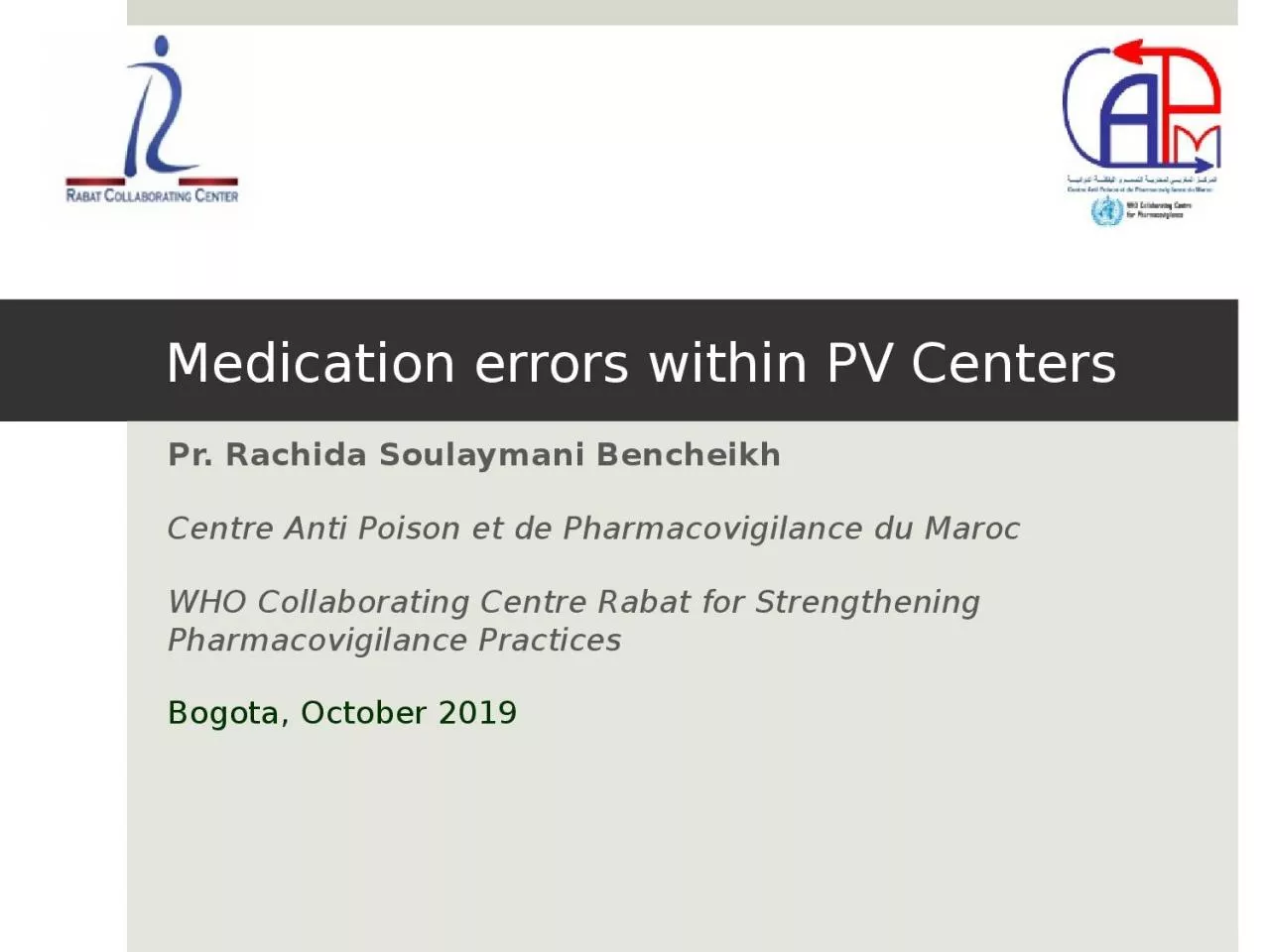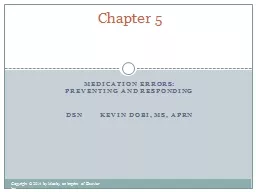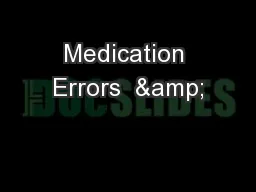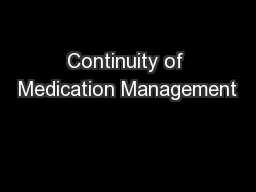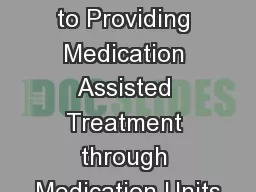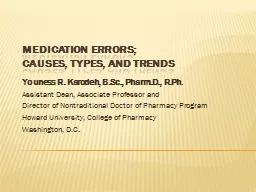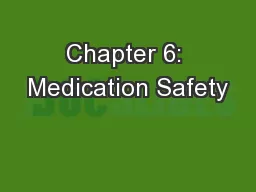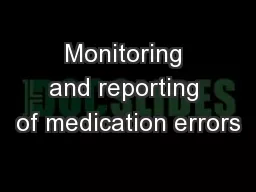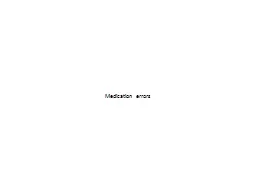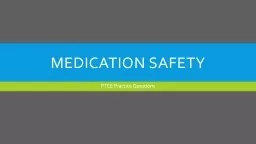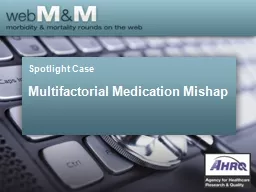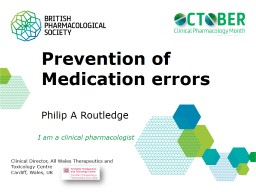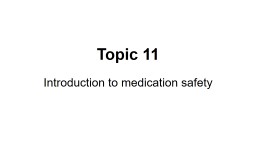PPT-Medication errors within PV Centers
Author : SexyBeast | Published Date : 2022-08-04
Pr Rachida Soulaymani Bencheikh Centre Anti Poison et de Pharmacovigilance du Maroc WHO Collaborating Centre Rabat for Strengthening Pharmacovigilance Practices
Presentation Embed Code
Download Presentation
Download Presentation The PPT/PDF document "Medication errors within PV Centers" is the property of its rightful owner. Permission is granted to download and print the materials on this website for personal, non-commercial use only, and to display it on your personal computer provided you do not modify the materials and that you retain all copyright notices contained in the materials. By downloading content from our website, you accept the terms of this agreement.
Medication errors within PV Centers: Transcript
Download Rules Of Document
"Medication errors within PV Centers"The content belongs to its owner. You may download and print it for personal use, without modification, and keep all copyright notices. By downloading, you agree to these terms.
Related Documents

